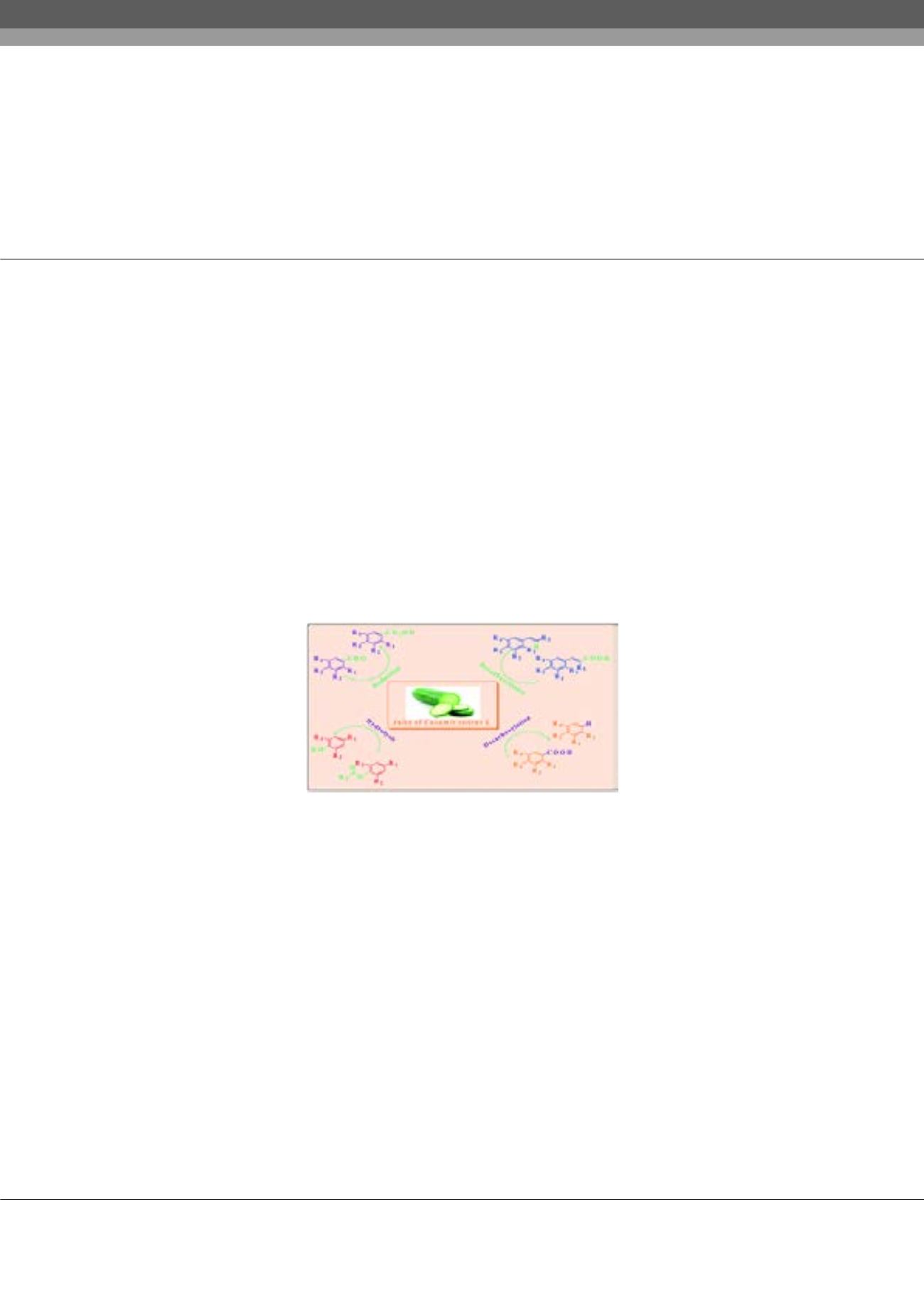

Notes:
Volume 3, Issue 2 (Suppl)
Trends in Green chem
ISSN: 2471-9889
Environmental & Green Chemistry 2017
July 24-26, 2017
Page 56
5
th
International Conference on
6
th
International Conference on
July 24-26, 2017 Rome, Italy
Environmental Chemistry and Engineering
Green Chemistry and Technology
&
Challenges of green chemistry for value added products
Ahindra Nag, K Mishra
and
H S Maity
Indian Institute of Technology, Kharagpur, India
F
ruit juices and lipases are important applications for the preparation of important value added products such as terpen esters,
cosmetics and drug intermediates. Lipases ( E.C3.1.1.3) which are highly stereoselective catalysts are used for the resolution of
DL menthol by esterification in organic solvent and synthesis of anti-inflammatory drugs in enantiomerically pure form. Glycerol
is the by-product of soap industry and has little commercial value which has used for synthesis of 4-methoxy cinnamoyl glycerol
(Ultraviolet protecting cream) by lipase in an optimum condition.
Cocos nucifera L. and Borassus flabellifer L
. juices act as bio catalytic
system for the reduction of aromatic aldehydes to alcohols and selective decarboxylation of substituted cinnamic acid to styrene and
substituted benzoic acid to polyphenolic compound. We have developed a new greener protocol for biotransformation of aromatic
aldehydes and acids by fruit juices. The two juices act as solvent, reactant, catalyst and selective to substrate. The purification process
of final products is very easy. In this method, protection and deprotection of the phenolic groups are avoided. The reaction system
does not use hazardous chemicals. Cucumber juice (CSJ), which acts as a greener solvent system, performing a substrate-selective
reaction. Additionally, the hydrolysis of the acetyl as well as the benzoyl group of aromatic compounds has been carried out to
afford excellent yield by CSJ. Caffeic acid extracted from potato peel was used for synthesis of caffeic acid amide which has shown
antioxidant, clinical drug resistance bacteria and antidiabetic properties.
Biography
Ahindra Nag is currently working as an Associate Professor in Department of Chemistry at Indian Institute of Technology Kharagpur, India. He completed his
PhD from Jadavpur University, India. He has 30 years of teaching and research experience in chemistry. He is currently working on natural product isolation and
characterization, Bioorganic and Medicinal chemistry. He has published his work in various journals( 80 ) and text books(8). He has guided ten Ph. D students and
visited different International universities as a Visiting Professor.
ahinnag@chem.iitkgp.ernet.inAhindra Nag et al., Trends in Green chem, 3:2
DOI: 10.21767/2471-9889-C1-002
















